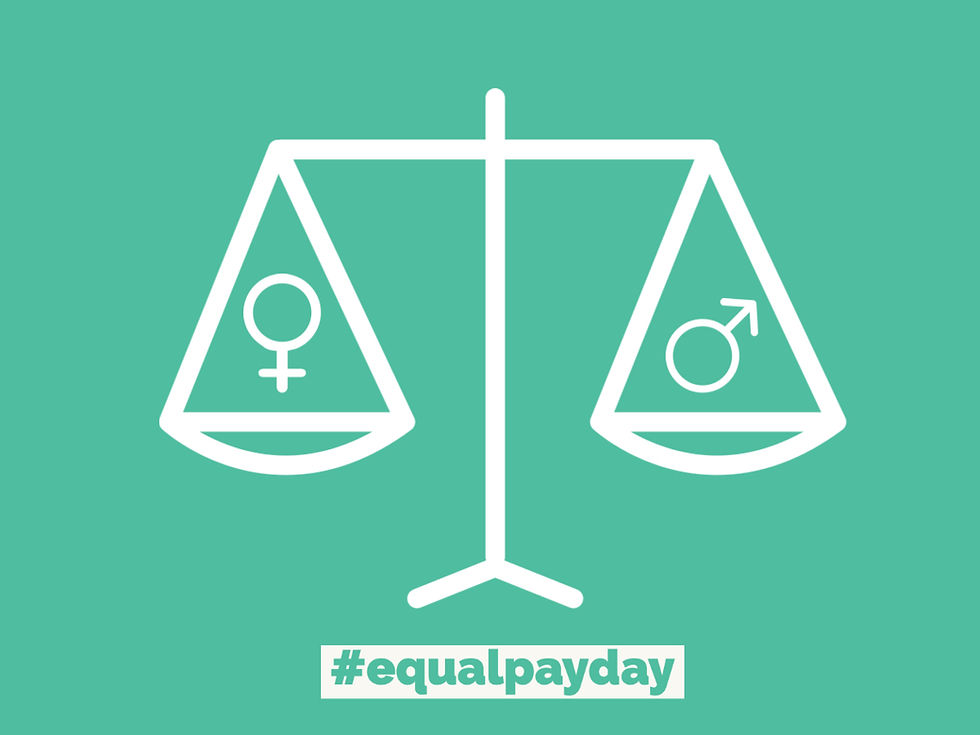How Employers Can Help Close the Pay Gap
- Kiwi Partners

- Feb 24, 2023
- 3 min read
Updated: Feb 27, 2023

Organizations around the world acknowledge Equal Pay Day, March 14, a date that symbolizes how far into the year women must work to earn what men earned in 2022. Based on the latest U.S. Census figures, “the average woman who works full time is paid on average just 83 percent of the typical man’s pay”. The American Association of University Women publishes an Equal Pay Day Calendar using a methodology that has been updated to "encompass a broader cross-section of women to a more accurate picture of how the gender pay gap impacts diverse communities."
In recognition of this inequity and to better support our workforce, below are some steps an employer can take to help close the pay gap:
Conduct a Gender Pay Gap Analysis – Gather available data and review compensation data based on defined demographics (e.g., gender, tenure, age, education, location, etc.).
Set Annual Market Rate Goals – Companies can set market rate goals, the direction for what needs to happen in order to increase the transparency in communication for compensation.
Be Realistic About Funds and the Possibility of Funding Constraints – The HR and Finance departments are an important partnership in closing the pay gap. Finance budgets for a certain number of employees or a percentage of marginalized salaries can be a challenge for company looking to make changes to compensation if the company does not have enough budget. An organization might consider providing modest increases to staff instead of making larger compensation changes due to budget restraints.
Review Hiring Practices – Research has shown that women and older workers are less likely to negotiate. Leaving less room to negotiate offers and discontinuing the use of salary history in hiring and compensation decisions can help reduce pay disparities.
Invest in Manager Training - Performance reviews, promotions, and bonus distributions can be affected by unconscious bias relating to behavioral traits, favoritism, and male-based definitions of success. Providing training and controls can ensure more equal evaluations.
Commit to Open Communication and Transparency – Employees sometimes feel left in the dark about how pay decisions are made within their workplace and about their employer’s overall pay policies. Communicating a “right to request” policy would help ensure that all employees have access to basic information about pay practices and policies within an organization.
Creating/Maintaining a Healthy Culture – Companies should create a workplace where everyone feels they belong. Hiring more women and more people of color while paying them fair wages will add to the healthy culture an organization is working to build or maintain. Employees often work and engage better when they feel they are being rewarded fairly.
Create Opportunities for Advancement – Ensuring that women are paid fairly is a start. Organizations should also consider how they can provide an environment where women can thrive and lead. Consider best practices in promotion and career progression to maintain their equity throughout the company. Ensuring that everyone has equal access to the same opportunities throughout the organization is key in bridging the gap. Providing opportunities for women in leadership positions can help drive valuable policy changes and demonstrate an avenue for success within the organization.
Adopt Policies to Support Working Mothers – Improving wages is one functional area in improving pay equity. Going a step further, policies that support working parents help women not have to navigate or sacrifice between their work and family responsibilities.
If you have any questions or are considering implementing any of the above best practices for equity, please reach out to your HR representative or contact us.
Resources
https://www.aauw.org/resources/article/equal-pay-day-calendar/






Comments